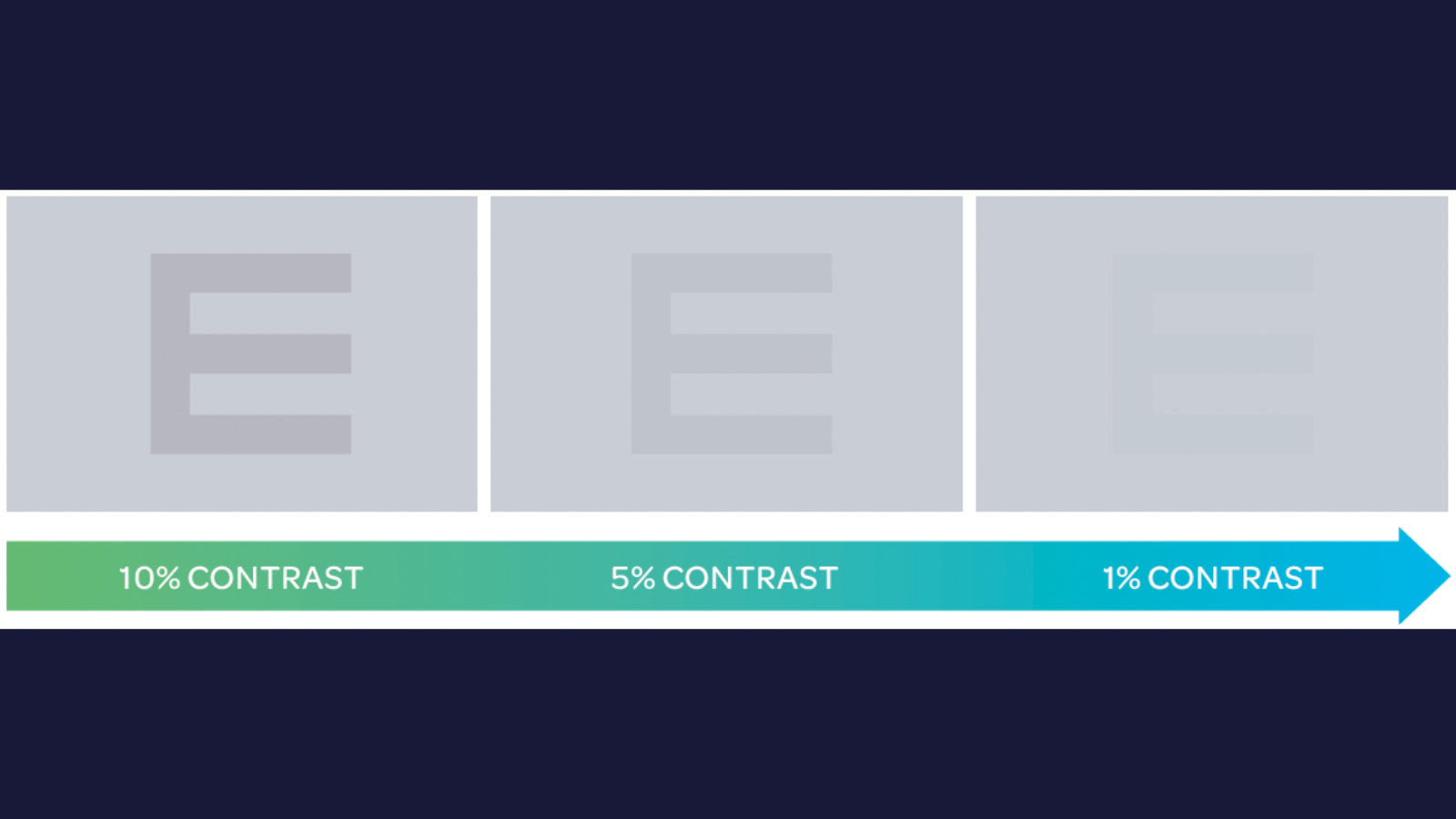While the Snellen visual acuity test is a universally accepted diagnostic tool, measuring black letters against a bright white background doesn’t provide the whole story of your patient’s visual function.
Contrast sensitivity is the ability to distinguish between an object and the background behind it. Reduced contrast sensitivity can impact a patient’s quality of life. Patients with reduced contrast sensitivity may experience poor vision while driving at night, difficulty seeing curbs and steps, and eye strain from watching television or reading.

How a Contrast Sensitivity Test Can Better Help Evaluate Older Patients
In a simple sense, the Snellen visual acuity test can be seen as a measure of the “quantity” of vision while contrast sensitivity is a measure of the “quality” of vision. In comparison, contrast sensitivity testing enables you to evaluate older patients and those with underlying conditions that may negatively impact contrast sensitivity, such as age-related macular degeneration (AMD), glaucoma, cataracts, aberrations in the corneal surface, diabetic retinopathy, even extremely dry or excessively watery eyes.
Visual Sensitivity Tests for Diabetes Patients with Vision Concerns
In particular, the prevalence of diabetes in our aging population underscores the importance of contrast sensitivity testing. Diabetes affects approximately 34 million Americans—slightly more than 10 percent of the U.S. population—according to the National Diabetes Statistics Report1 from the Centers for Disease Control and Prevention.
In addition, nearly half of all Americans aged 65+ (26.4 million) have prediabetes1. While they have yet to be diagnosed with type 2 diabetes, they have higher-than-normal blood sugar levels.
Contrast sensitivity testing can serve as an early predictive marker for diabetic retinopathy2, even among patients with normal Snellen acuity.
Warning Signs of Declining Contrast Sensitivity
Talking to patients about their vision concerns often provides the first warning sign of declining contrast sensitivity.
A contrast sensitivity test is warranted if your patients share their visual concerns, such as problems with glare, difficulty seeing or reading in dim lighting, difficulty driving at night or in fog, or trouble differentiating between similar colors or similar shades of gray, such as the challenge of stepping off a curb to asphalt.
Diagnosing and measuring contrast sensitivity enables you to enhance your patient’s quality of life by recommending corrective measures, such as prescribing tinted lenses, anti-reflective coatings, polarized lenses or photochromic type lenses, or refractive surgery to correct aberrations in the corneal surface.
Technology Improvements Make it Easier to Diagnose Contrast Sensitivity Problems
Based on the current standard of contract sensitivity testing, the Pelli-Robson test, and Heru’s Contrast Sensitivity test uses a tumbling E presentation with a staircase threshold testing strategy, going from darker to lighter contrast. When the patient answers incorrectly, the contrast is then increased until the patient again answers correctly. Patients perform the self-guided test out of the exam lane, without the need for a technician or clinician.
While paper contrast sensitivity charts fade and require precise illumination for accuracy, Heru’s built-in illumination ensures proper contrast and correct illumination every time.
The new Heru Contrast Sensitivity test is part of a suite of vision diagnostic exams that can be performed using a single, wearable platform. To measure both the “quantity” and “quality” of your patient’s visual function, consider complementing visual acuity testing with Heru’s Contrast Sensitivity test in your comprehensive annual eye examinations.
Learn more about the Heru virtual exam platform
Thomas A. Wong, O.D., Associate Clinical Professor, Director of Clinical Externships, and Director of New Technologies at SUNY.
1. National Diabetes Statistics Report. https://www.cdc.gov/diabetes/data/statistics-report/index.html
2. Subhasish Pramanik, Subhankar Chowdhury, Upasana Ganguly, Anindita Banerjee, Basudev Bhattacharya, Lakshmi Kanta Mondal. Visual contrast sensitivity could be an early marker of diabetic retinopathy. Heliyon, Volume 6, Issue 10, 2020; e05336, ISSN 2405-8440. https://doi.org/10.1016/j.heliyon.2020.e05336.

